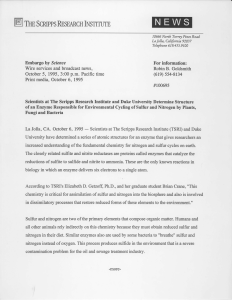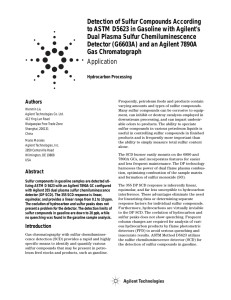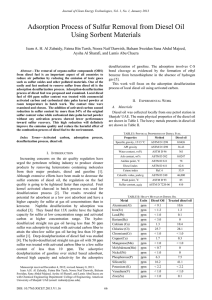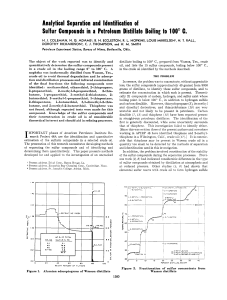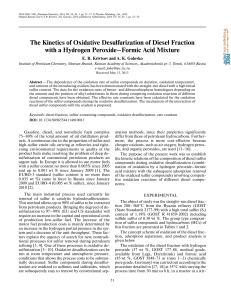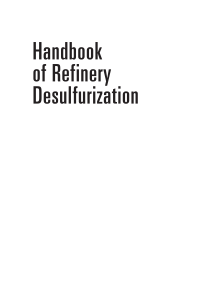Bacterial desulfurization of organic sulfur compounds exist in fossil fuels Abstract
advertisement
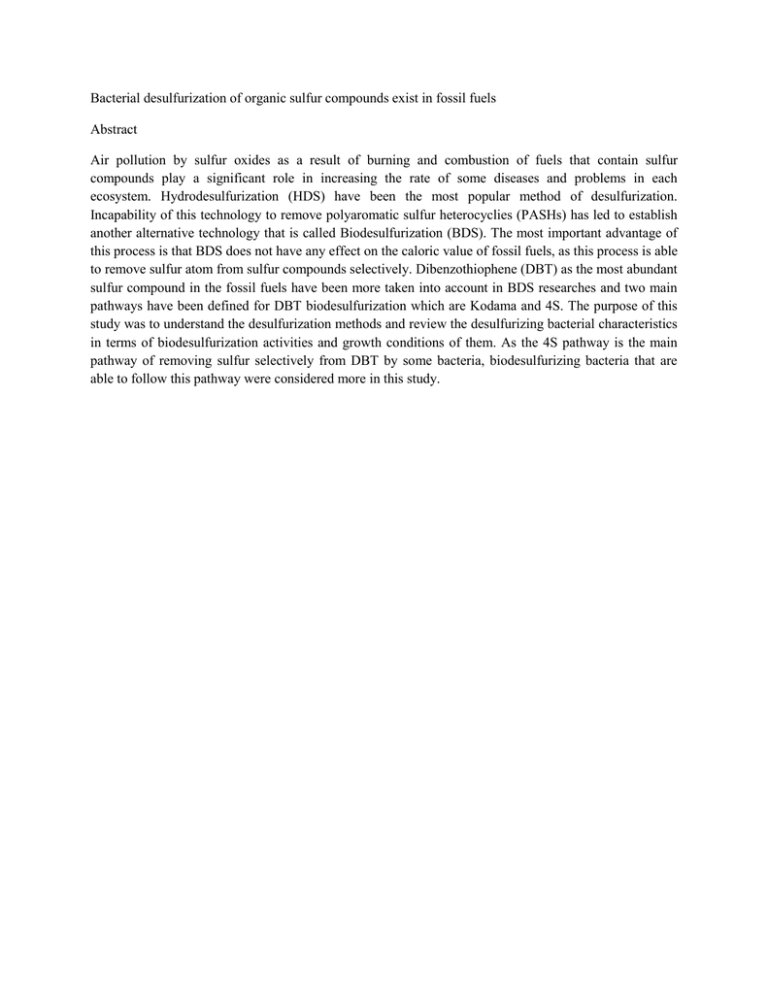
Bacterial desulfurization of organic sulfur compounds exist in fossil fuels Abstract Air pollution by sulfur oxides as a result of burning and combustion of fuels that contain sulfur compounds play a significant role in increasing the rate of some diseases and problems in each ecosystem. Hydrodesulfurization (HDS) have been the most popular method of desulfurization. Incapability of this technology to remove polyaromatic sulfur heterocyclies (PASHs) has led to establish another alternative technology that is called Biodesulfurization (BDS). The most important advantage of this process is that BDS does not have any effect on the caloric value of fossil fuels, as this process is able to remove sulfur atom from sulfur compounds selectively. Dibenzothiophene (DBT) as the most abundant sulfur compound in the fossil fuels have been more taken into account in BDS researches and two main pathways have been defined for DBT biodesulfurization which are Kodama and 4S. The purpose of this study was to understand the desulfurization methods and review the desulfurizing bacterial characteristics in terms of biodesulfurization activities and growth conditions of them. As the 4S pathway is the main pathway of removing sulfur selectively from DBT by some bacteria, biodesulfurizing bacteria that are able to follow this pathway were considered more in this study.

